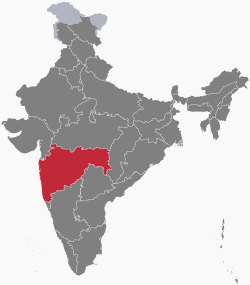OK, so on Sunday I cooked a meal from Macedonia. I didn't feel like getting my lights down, so my photos all suck, but I did cook the meal (yay).
Actually this is the second time I've cooked a meal from Macedonia, but the last time was like two years ago and I honestly couldn't tell you a thing about it. In fact when I look at the recipes I made last time, I'm like, "Hmm, I have no memory of ever making that." So that must mean it just wasn't very memorable. Which is why I chose completely different recipes this time around.
I'm doing this in bite-sized portions, (I don't mean the food itself, I mean the blog), which I hope will keep it more manageable. So for this post, I'm just going to tell you a little bit about Macedonia. Recipes will follow later in the week.
Macedonia is in Southern Europe. It borders Albania, Greece and Bulgaria, with Kosovo and Serbia to the north. If you really haven’t heard much about Macedonia, there’s a good reason—until 1991 it existed only as a part of the former Yugoslavia. Macedonia is a member of the United Nations, but because of some whine-fest between it and Greece over who has the right to actually use the word “Macedonia,” the UN calls it “The Former Yogoslav Republic of Macedonia,” instead of just “Macedonia,” which must be really annoying to whomever has to keep typing its name into the official documents.
 |
Macedonia is beautiful—its terrain consists mostly of mountains, valleys and rivers—but it’s also one of the poorest European countries. In 2015 the unemployment rate was 27.3%, which sounds awful until you hear that that number is actually significantly down from where it was in 2005 (37.2%). Today, seventy-two percent of Macedonians say they can manage to survive on their income only with “difficulty” or “great difficulty,” even though nationally things like GDP, foreign trade and economic growth make it look pretty good on paper.
The Macedonian climate is warm, so the conditions are good for growing fruits and vegetables, which means that the cuisine is pretty diverse. It’s been influenced by Macedonia’s Mediterranean and Middle Eastern neighbors like Greece and Turkey, so the food has got some flavor, which is always a plus.
On a totally separate note, I got a request from one of my three readers (haha) to post one or two of my favorite healthy recipes, so I’m going to append one of those to the end of this post, even though it has absolutely nothing to do with Macedonia. So here’s healthy recipe the first. How is this Travel by Stove? Well, it hails from somewhere in exotic El Segundo, CA, which is where Clean Eating Magazine is published. It actually took me way too long to find their location on their dumb website, so I hope you at least chuckled.
Chicken Burgers with Basil Yogurt Sauce
From Clean Eating Magazine
For the sauce:
- 1/4 cup whole-milk plain yogurt
- 1/4 cup chopped fresh basil
- 2 tsp Dijon mustard
- 1 tsp fresh lemon juice
- 1 tsp raw honey
- 1/8 tsp each sea salt and ground
black pepper
For the burgers:
- 1½ lb ground chicken or turkey
- 1/4 cup finely diced baby cucumber
- 1/4 cup finely diced red onion
- 1 tbsp chopped fresh dill
- 2 tbsp whole-milk plain yogurt
- 2 tsp Dijon mustard
- 1/8 tsp each sea salt and ground
black pepper
- 4 slices (1/2 oz each) Havarti cheese
- 4 slices whole-grain baguette (sliced diagonally)
- 4 small leaves red leaf lettuce
- 1 Roma tomato, sliced
- 1/4 cup diced avocado
Directions:
First combine the sauce ingredients in a small bowl, then set aside.
Now preheat your grill to medium high and brush with oil (I just used a grill pan on my stove, and they turned out awesome).
Mix the ground chicken with the cucumber, onion, yogurt, dill, Dijon mustard and salt and pepper. Shape the mixture into four patties and grill on both sides until they reach an internal temperature of 165 degrees. A couple of minutes before they're done, top each patty with a slice of cheese and toast the baguette slices.
Serve the patties on the toasted baguette slices and top with tomato, avocado and yogurt basil sauce.
And just as an aside, the key to eating healthy is to limit (but not eliminate) carbs and fat. If you're going to eat carbs, eat whole grain everything. Have some cheese and avocado but don't overdo it. And substitute Greek yogurt for everything (mayo, sour cream, salad dressing ...).
Macedonian recipes will land here in a few days. See you then!

















